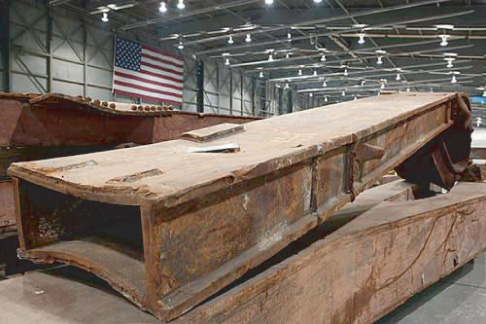The final connection between the column is a partial penetration butt weld. Which is essentially like a fillet weld probably about 8 to 12mm. And you can see the indent of the welds where the columns have been ripped apart.
Interestingly they seem to have only run the fillet weld on the two long sides of the column and the short sides are just in bearing.
Very interesting. For some reason I had it in my head that the core columns had splice plates, which could potentially be stronger than (or in addition to) a butt weld.
Here's a brightened version of the photo I took at the museum.

As you say, the welds are just on the long face.
So it seems this image here does actually show the weld.

There was one column that shows up in a few photos, roughly in it's original location. You can see the connection between the upper section and a somewhat thicker lower section. You can also see the connection point for floors. These are not symmetrical, with a shorter gap at the top. (Maybe useful in figuring out which way up a beam was)

What I'm trying to do here is figure out a way of
effectively explaining to people why the columns failed. Always tricky, but maybe an analogy could be something like slender blocks glued together. Like if you were to take an 8 foot long 2x4 piece of wood. It's very strong. But if you saw it in two four foot sections and then glue the ends together with a strong glue epoxy along the longer edges, then you can see how it might come apart with far less lateral load.
Then there's the welds themselves. People perhaps think of welded connections being incredibly strong, but we can see that there are lots of columns that seem to have simply snapped at the welds with very little deformation of the columns themselves. Weld material can be brittle. It's probably a bit technical to get into with most people, but the images are useful to show just how little needed to fail.
Also of interest is the welding on two sides only (the long sides), which would suggest that one side would fail under tension, then the other would essentially act briefly like a hinge







